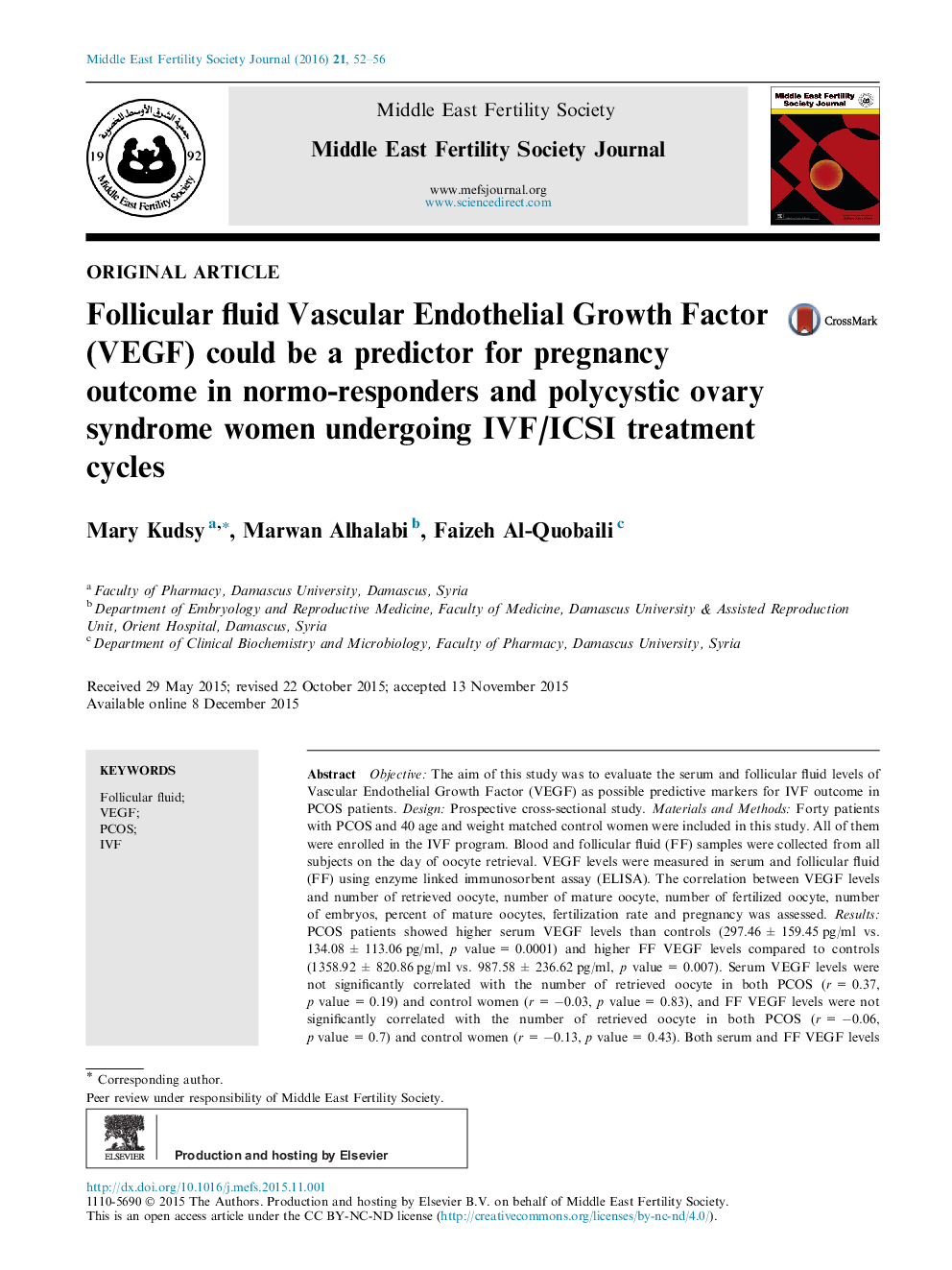| Article ID | Journal | Published Year | Pages | File Type |
|---|---|---|---|---|
| 3966072 | Middle East Fertility Society Journal | 2016 | 5 Pages |
Objective: The aim of this study was to evaluate the serum and follicular fluid levels of Vascular Endothelial Growth Factor (VEGF) as possible predictive markers for IVF outcome in PCOS patients. Design: Prospective cross-sectional study. Materials and Methods: Forty patients with PCOS and 40 age and weight matched control women were included in this study. All of them were enrolled in the IVF program. Blood and follicular fluid (FF) samples were collected from all subjects on the day of oocyte retrieval. VEGF levels were measured in serum and follicular fluid (FF) using enzyme linked immunosorbent assay (ELISA). The correlation between VEGF levels and number of retrieved oocyte, number of mature oocyte, number of fertilized oocyte, number of embryos, percent of mature oocytes, fertilization rate and pregnancy was assessed. Results: PCOS patients showed higher serum VEGF levels than controls (297.46 ± 159.45 pg/ml vs. 134.08 ± 113.06 pg/ml, p value = 0.0001) and higher FF VEGF levels compared to controls (1358.92 ± 820.86 pg/ml vs. 987.58 ± 236.62 pg/ml, p value = 0.007). Serum VEGF levels were not significantly correlated with the number of retrieved oocyte in both PCOS (r = 0.37, p value = 0.19) and control women (r = −0.03, p value = 0.83), and FF VEGF levels were not significantly correlated with the number of retrieved oocyte in both PCOS (r = −0.06, p value = 0.7) and control women (r = −0.13, p value = 0.43). Both serum and FF VEGF levels were not significantly correlated with the number of mature oocyte, number of fertilized oocyte, number of embryos, percent of mature oocytes or fertilization rate. Serum VEGF levels were not significantly different between pregnant and non-pregnant women in both PCOS (256.69 ± 139.11 pg/ml vs. 300.20 ± 114.60 pg/ml, p value = 0.416) and control women (107.98 ± 115.51 pg/ml vs. 154.39 ± 111.09 pg/ml, p value = 0.271), whereas FF VEGF levels were significantly lower in FFs from the group of pregnancy than those from the group of no-pregnancy in both PCOS (812.04 ± 308.16 pg/ml vs. 1936.78 ± 771.79 pg/ml, p value = 0.0001) and control women (822.45 ± 199.45 pg/ml vs. 1171.98 ± 139.60 pg/ml, p value = 0.0001). FF VEGF levels had a significant predictive value of pregnancy in both PCOS (p value = 0.0001) and control women (p value = 0.0001). Conclusion: FF VEGF levels may serve as a reliable predictive marker for pregnancy in both normal women and women with polycystic ovary syndrome undergoing IVF.
